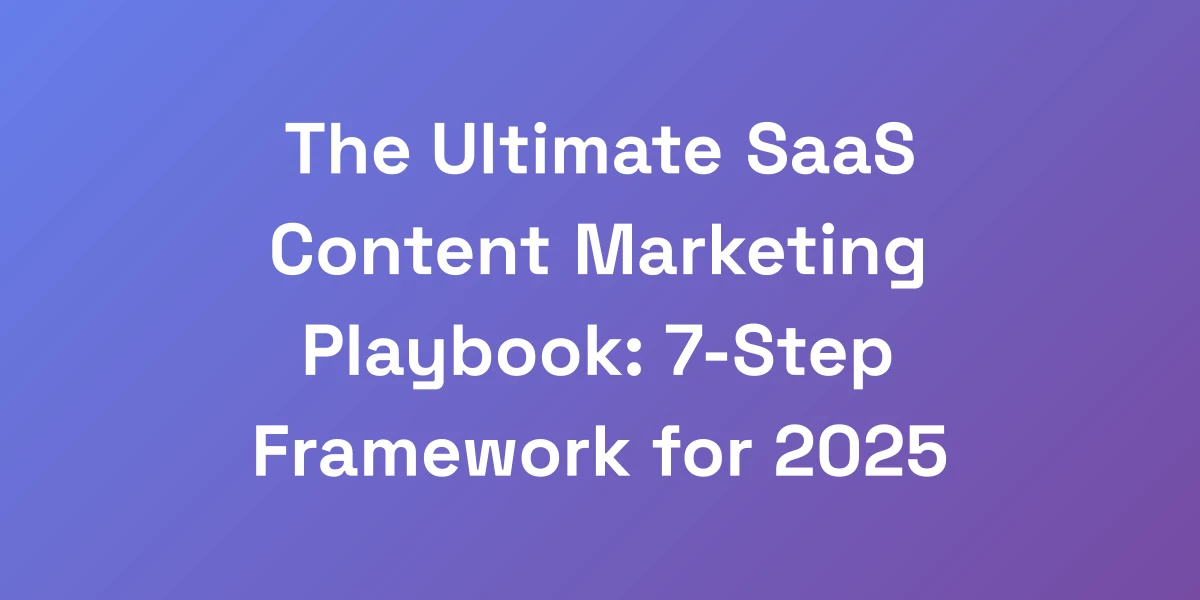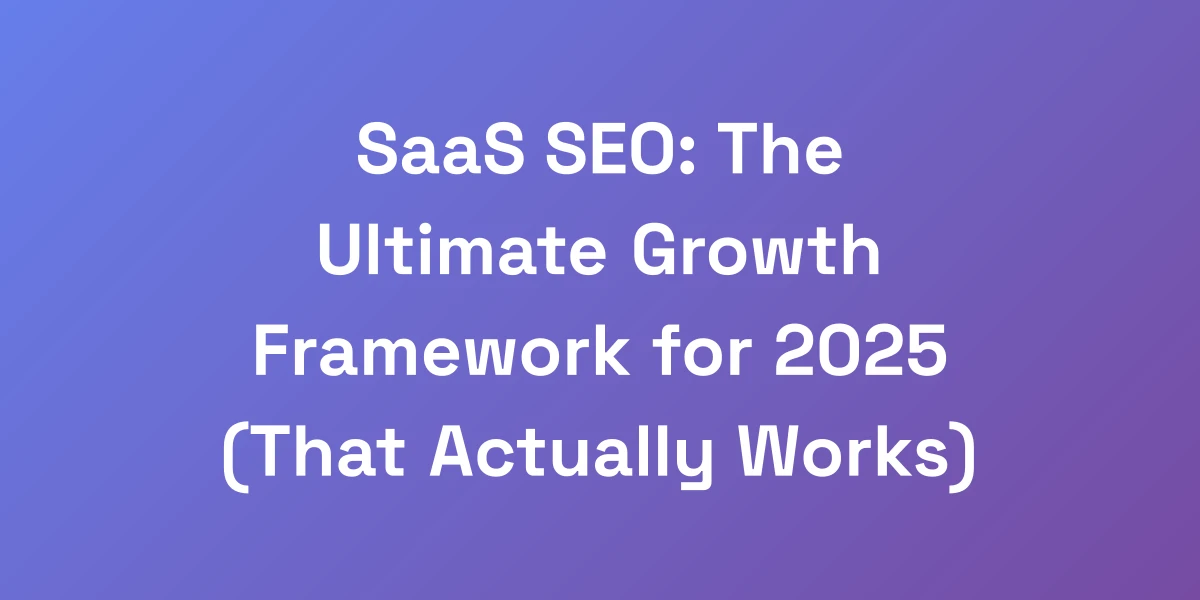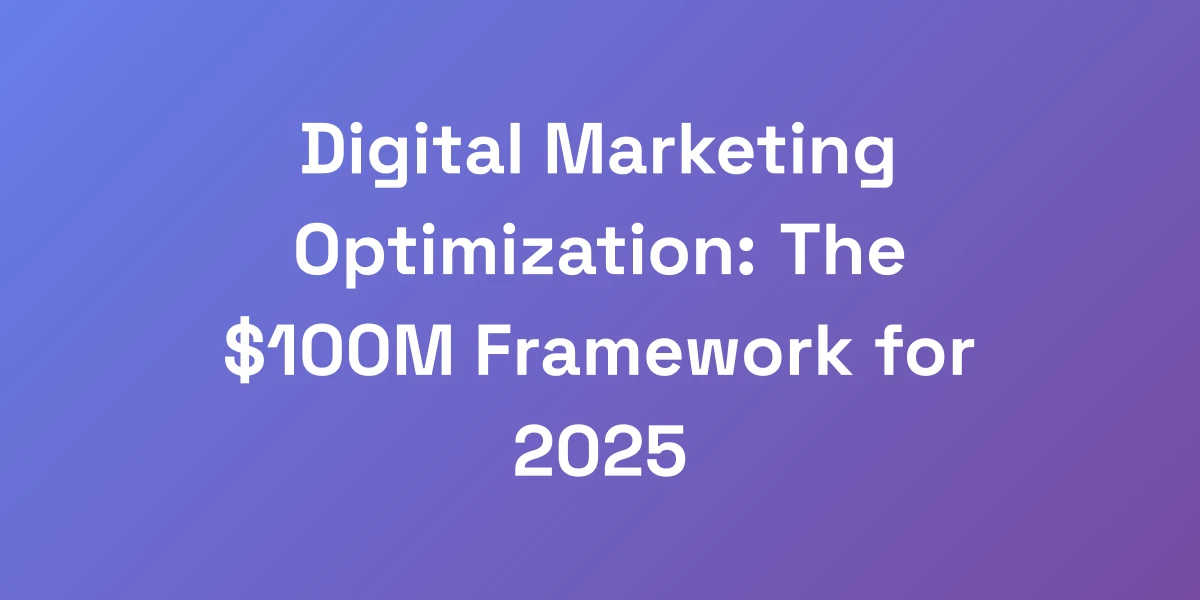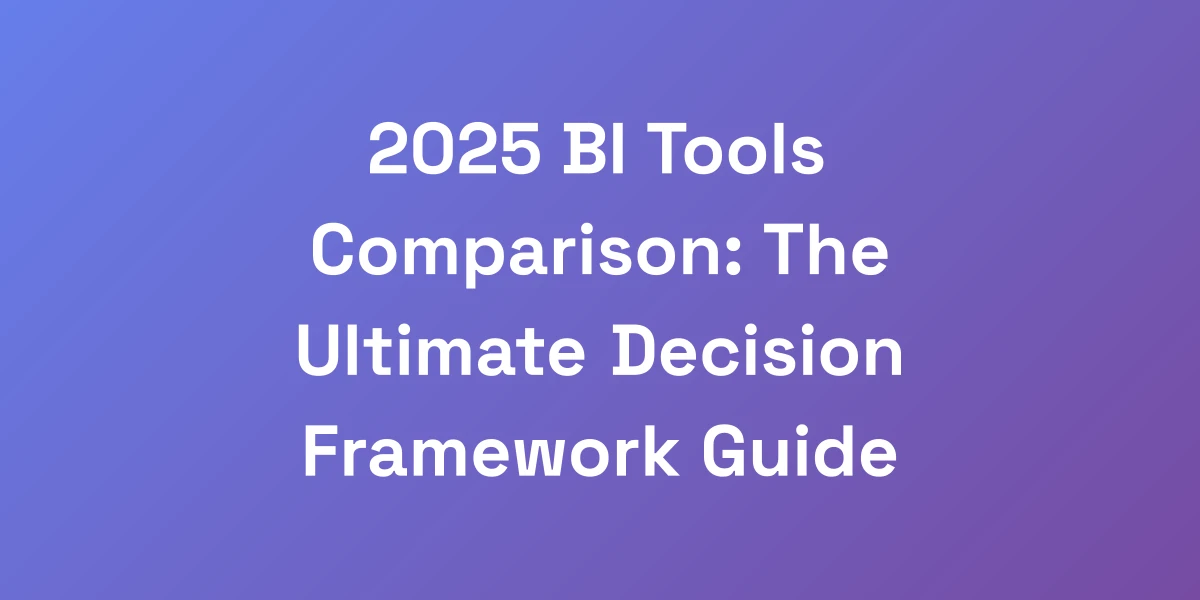
The Ultimate Competitive Landscape Analysis Framework for 2025
Mar 28, 2025 | By [email protected]
Let’s cut to the chase: if you’re stuck using outdated competitive landscape analysis methods, you’re leaving money on the table. The game has changed, and so must your approach.
We’re navigating a world where competitors pop up overnight, fueled by advancements in AI and digital transformation. The old ways? They’re not just ineffective—they’re a liability.
But don’t worry. We’ve cracked the code on how to stay ahead, using a framework that’s not only cutting-edge but also proven to drive over $100 million in revenue across our portfolio companies. Ready to revolutionize your strategy and dominate your market? Let’s dive in.
Why Traditional Competitive Analysis Is Dead (And What’s Replacing It)
Let me hit you with some truth: If you’re still doing competitive analysis the same way everyone else is, you’re already behind. The market doesn’t reward average. In today’s hyperconnected world, your competitors aren’t just the obvious players—they’re emerging from dark corners you’ve never even considered.
We’ve spent millions testing different approaches, and I’m going to show you exactly how we’ve revolutionized our competitive landscape analysis to spot opportunities others miss and capitalize on them before anyone else even notices.
The Evolution of Market Competition in the Digital Age
The digital age has transformed how businesses compete. It’s no longer just about who has the best product or the deepest pockets. Today, it’s about agility, data-driven decisions, and leveraging technology to gain an edge.
Take the cloud computing market, for example. AWS holds 31% of the market, but Azure and Google Cloud have surged to 25% and 11% respectively, thanks to their investments in generative AI. This shift isn’t just a blip—it’s a clear signal of how technology trends dictate market leadership.
Businesses that fail to recognize and adapt to these changes risk obsolescence. It’s about more than keeping up; it’s about anticipating and shaping the market.
Hidden Competitors: Why They’re Your Biggest Threat
Think your competitors are limited to the big names? Think again. Hidden competitors—those that aren’t immediately obvious—can pose significant threats. They’re agile, innovative, and often disrupt the market from unexpected angles.
Consider the electric vehicle (EV) market. While Tesla still dominates with 44% market share, traditional giants like General Motors and Ford are ramping up their EV sales, challenging Tesla’s supremacy. These established players weren’t always in the EV space, yet their entry has shifted the competitive dynamics dramatically.
Identifying these hidden competitors early allows you to prepare and strategize effectively, preventing your business from being blindsided by sudden market shifts.
The Cost of Outdated Analysis Methods
Continuing with outdated competitive analysis methods is costing businesses dearly. It’s not just about lost opportunities—it’s about wasted resources and missed revenue streams.
Outdated methods often rely on static, quarterly reviews that can’t keep pace with today’s rapid market changes. By the time you analyze and act, the window of opportunity has often already closed.
This lag can be the difference between leading the market and playing catch-up. Investing in modern, real-time analysis tools is no longer optional—it’s a necessity for survival and growth.
The New Competitive Intelligence Stack
Welcome to the future of competitive analysis: the new competitive intelligence stack. This isn’t just a collection of tools—it’s an integrated system designed to provide real-time insights and actionable intelligence.
- AI-Powered Analytics: Leveraging AI to predict market trends and competitor moves.
- Real-Time Data Feeds: Continuous monitoring of market signals and competitor activities.
- Automated Reporting: Instantly accessible reports that highlight critical insights without the wait.
By integrating these components, you create a dynamic intelligence system that adapts and responds to market changes as they happen, giving you a competitive edge that static methods simply can’t match.
Real-Time Analysis vs. Traditional Quarterly Reviews
Imagine making strategic decisions based on data that’s months old. It’s a recipe for missed opportunities and strategic missteps.
Real-time analysis provides a constant stream of actionable data, allowing you to pivot and adapt on the fly. This agility is crucial in today’s fast-paced market environments where trends can emerge and fade in weeks, not years.
Traditional quarterly reviews offer a snapshot of the past, not the present. By moving to a real-time model, you ensure that your strategies are always aligned with the current market landscape, enabling proactive rather than reactive decision-making.
The 5-Step Velocity Framework for Competitive Intelligence
Here’s the framework that’s generated over $100M in revenue across our portfolio companies. It’s not about gathering more data—it’s about gathering the right data, faster. Most businesses drown in information while starving for insights. This framework cuts through the noise and focuses on what actually moves the needle.
We’re going to show you how to identify, analyze, and act on competitive intelligence in a way that creates immediate market advantages.
Step 1: Rapid Competitor Identification Protocol
First things first: you need to know who your actual competitors are. This goes beyond the obvious players. Our Rapid Competitor Identification Protocol leverages AI to scan the market continuously, identifying emerging competitors before they gain traction.
- Automated Scanning: Use AI tools to monitor keywords, market entry announcements, and funding rounds.
- Dynamic Profiling: Create profiles for both direct and indirect competitors, ensuring no hidden threats slip through.
- Regular Updates: Keep your competitor list current with real-time data feeds and alerts.
By swiftly identifying competitors, you can allocate resources effectively and stay ahead of new entrants disrupting your market.
Step 2: Digital Footprint Analysis
Understanding your competitors’ digital presence is crucial. Our Digital Footprint Analysis dives deep into their online activities, revealing their strategies and areas of strength.
- Website and SEO Audit: Analyze their website structure, keyword usage, and SEO strategies to uncover their digital tactics, including FatJoe backlink services.
- Social Media Monitoring: Track their engagement, content strategies, and audience interactions across platforms.
- Content Strategy: Evaluate the type and frequency of content they produce to understand their messaging and positioning.
These insights help you identify gaps in your own strategies and capitalize on areas where your competitors are underperforming.
Step 3: Value Proposition Mapping
Your competitors’ value propositions are the promises they make to their customers. Mapping these out allows you to understand where they excel and where they fall short.
- Identify Core Offerings: Break down the main products or services they offer and their unique selling points.
- Customer Benefits: Analyze the benefits they highlight to their customers and how they address pain points.
- Differentiators: Determine what sets them apart from others in the market and where you can differentiate your own offerings.
By understanding their value propositions, you can refine your own to better meet customer needs and stand out in the crowded marketplace.
Step 4: Growth Vector Analysis
Where are your competitors heading? Growth Vector Analysis helps you predict their next moves by identifying their strategic growth areas.
- Expansion Plans: Monitor announcements about entering new markets or launching new products.
- Investment Trends: Track their investments in technology, R&D, and other growth initiatives.
- Partnerships and Alliances: Identify strategic partnerships that could amplify their market presence.
By anticipating their growth strategies, you can proactively adjust your own plans to counteract their moves and capture emerging opportunities.
Step 5: Actionable Intelligence Extraction
Data is only valuable if you can turn it into action. This final step focuses on extracting actionable intelligence that directly informs your strategic decisions.
- Insight Synthesis: Combine data from various sources to form a comprehensive understanding of the competitive landscape.
- Strategic Recommendations: Translate insights into clear, actionable strategies that can be implemented immediately.
- Performance Tracking: Continuously monitor the impact of your strategies and adjust as necessary to ensure ongoing success.
This step ensures that all the data you’ve gathered translates into tangible actions that drive your business forward.
Advanced Market Position Optimization Tactics
Listen carefully: Market positioning isn’t about being better—it’s about being different in ways that matter. We’ve seen companies waste millions
trying to compete head-on when they could’ve dominated by changing the game entirely. Here’s the exact process we use to turn competitive landscape analysis into actionable differentiation strategies that create uncontested market space.
Creating Competitive Moats in Saturated Markets
In saturated markets, carving out a unique space is essential. Creating competitive moats protects your business from rivals and ensures long-term sustainability.
- Unique Value Propositions: Develop offerings that are distinctly different from your competitors, addressing unmet customer needs.
- Intellectual Property: Invest in patents, trademarks, and proprietary technologies that give you a unique edge.
- Customer Loyalty: Build strong relationships and brand loyalty through exceptional customer service and consistent value delivery.
These strategies create barriers for competitors and position your business as the go-to choice in your niche.
Psychological Triggers in Market Positioning
Understanding the psychology behind consumer decisions can significantly enhance your market positioning. By tapping into these psychological triggers, you can influence perceptions and drive preference.
- Emotional Branding: Connect with your audience on an emotional level through storytelling and relatable brand narratives.
- Scarcity and Exclusivity: Create a sense of urgency and exclusivity around your products or services to boost desirability.
- Social Proof: Leverage testimonials, reviews, and case studies to build trust and credibility.
Incorporating these psychological elements into your positioning strategy makes your brand more compelling and memorable.
Leveraging Competitor Blind Spots
Every competitor has blind spots—areas they overlook or undervalue. Identifying and exploiting these gaps can give you a significant advantage.
- Market Segments: Target niche segments that your competitors have neglected or underserved.
- Product Features: Offer features or services that competitors do not, addressing specific customer pain points.
- Geographical Areas: Expand into regions where competitors have little to no presence, capturing new customer bases.
By focusing on these blind spots, you can meet unaddressed needs and differentiate your offerings effectively.
The Blue Ocean Strategy Implementation
Blue Ocean Strategy is about creating untapped market space rather than battling in crowded arenas. Implementing this strategy involves identifying and developing new opportunities.
- Market Innovation: Introduce innovative products or services that redefine market boundaries.
- Value Innovation: Simultaneously pursue differentiation and cost leadership to create overall value for customers.
- Strategic Alignment: Ensure that your entire organization is aligned with the blue ocean strategy, from product development to marketing.
Executing a Blue Ocean Strategy allows you to sidestep fierce competition and establish yourself in a space where you are the leader.
Rapid Testing and Position Refinement
Market positioning isn’t static. It requires continuous testing and refinement to stay relevant and effective.
- A/B Testing: Experiment with different messaging and positioning strategies to see what resonates best with your audience.
- Customer Feedback: Collect and analyze feedback to understand how your positioning is perceived and where improvements are needed.
- Agile Adjustments: Make swift adjustments based on testing and feedback to optimize your positioning continuously.
This iterative approach ensures that your market positioning evolves with changing customer preferences and market dynamics.
Predictive Competition Mapping: Future-Proofing Your Business
The biggest money isn’t in reacting to competition—it’s in predicting where they’ll be in 6-12 months. We’ve developed a system that spots competitive threats before they become obvious.
This isn’t about crystal balls; it’s about understanding market patterns and human behavior at a deeper level. We’re going to show you how to build an early warning system that gives you a 6-month head start on market changes.
Pattern Recognition in Competitive Behavior
Recognizing patterns in competitor behavior allows you to anticipate their next moves. This involves analyzing past actions to predict future strategies.
- Trend Analysis: Identify recurring trends in your competitors’ actions, such as product launches or marketing campaigns.
- Behavioral Patterns: Understand the consistent behaviors and decision-making processes of key competitors.
- Predictive Modeling: Use data-driven models to forecast future actions based on identified patterns.
This proactive approach enables you to prepare and strategize before competitors make their moves.
Market Signal Analysis Framework
Market signals are indicators of upcoming changes and trends. A robust Market Signal Analysis Framework helps you interpret these signals accurately.
- Data Collection: Gather data from diverse sources, including social media, news outlets, and industry reports.
- Signal Identification: Identify signals that indicate significant market shifts or competitor activity.
- Impact Assessment: Evaluate the potential impact of these signals on your business and the overall market.
By analyzing market signals, you can anticipate changes and adjust your strategies accordingly.
Emerging Technology Impact Assessment
Technology is a major driver of market change. Assessing the impact of emerging technologies on your industry helps you stay ahead of the curve.
- Technology Scouting: Identify and monitor emerging technologies that could disrupt your market.
- Impact Analysis: Evaluate how these technologies could affect your business operations, products, and services.
- Adaptation Strategies: Develop strategies to integrate or counteract these technologies to maintain your competitive edge.
Staying informed about technological advancements ensures that you can leverage or mitigate their impact effectively.
Competitor Innovation Prediction Model
Predicting competitor innovations gives you a strategic advantage. Our Competitor Innovation Prediction Model analyzes various factors to forecast where competitors are headed.
- Innovation Tracking: Monitor competitors’ R&D investments, patent filings, and product development activities.
- Trend Forecasting: Use advanced analytics to predict future innovations based on current data.
- Strategic Planning: Align your own innovation strategies to preemptively counter or capitalize on competitor advancements.
This model provides a clear picture of potential competitor innovations, allowing you to plan and execute your strategies proactively.
Risk Mitigation Strategies
With the insights gained from predictive competition mapping, it’s crucial to implement effective risk mitigation strategies.
- Scenario Planning: Develop multiple scenarios based on potential market changes and prepare corresponding strategies.
- Contingency Plans: Establish contingency plans to address unforeseen competitive moves or market disruptions.
- Diversification: Diversify your product offerings and market presence to reduce dependency on any single market segment.
These strategies ensure that your business remains resilient and adaptable in the face of unexpected changes.
Implementing Your Competitive Intelligence Machine
Knowledge without action is useless. Here’s how to turn your competitive landscape analysis into a systematic advantage machine. We’re talking about building processes that run on autopilot, continuously gathering and analyzing competitive intelligence.
This is the system that helps our portfolio companies stay three steps ahead of market changes and capitalize on opportunities within hours instead of weeks.
Building Your Intelligence Team
A robust competitive intelligence system starts with a dedicated team. Building your intelligence team involves selecting professionals with the right skills and mindset.
- Cross-Functional Expertise: Include members with backgrounds in data analysis, market research, and strategic planning.
- Continuous Training: Invest in training to keep your team updated with the latest tools and techniques in competitive intelligence.
- Collaborative Culture: Foster a culture of collaboration and information sharing to enhance the efficiency and effectiveness of your intelligence efforts.
A well-structured team is the backbone of your competitive intelligence machine, ensuring seamless data collection and analysis.
Automation and Tool Stack Integration
Automation is key to handling the vast amounts of data involved in competitive landscape analysis. Integrating the right tools streamlines your processes and enhances accuracy.
- AI-Powered Tools: Implement AI tools like SEMrush and EyeOn for comprehensive data collection and analysis.
- Unified Platforms: Use integrated platforms that allow seamless data flow between different tools, reducing manual intervention. Additionally, incorporating diff checker tools can enhance your ability to identify subtle changes in competitor strategies.
- Custom Dashboards: Create custom dashboards that provide real-time insights and make data easily accessible to your team.
By automating data collection and integrating your tool stack, you free up your team to focus on strategic analysis and decision-making, maximizing the value of your competitive intelligence efforts.








